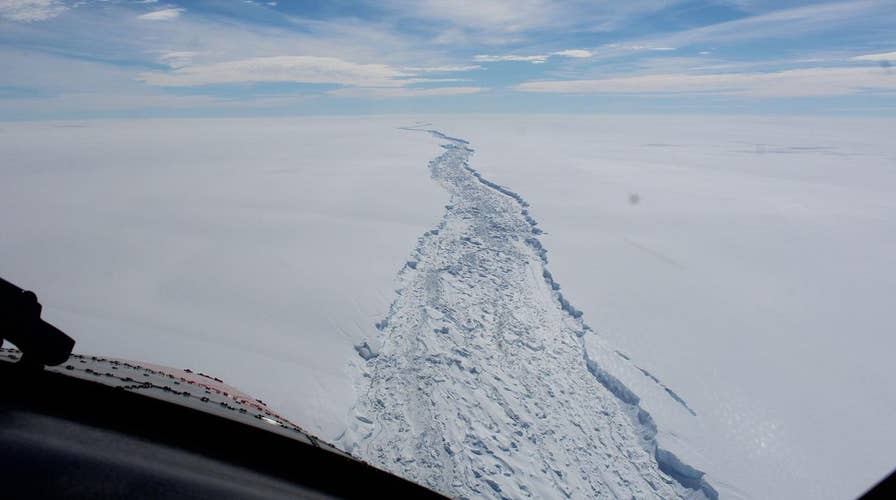Massive Antarctica iceberg breaks off from continent
An iceberg the size of Delaware has broken off from Antarctica that has some experts worried about the potential threat to passing ships and rising sea levels
One year ago, a massive iceberg the size of Delaware broke off from the Larsen C ice shelf in Antarctica, triggering concerns about how the event could impact shipping routes and sea levels.
The 2,240-square-mile iceberg only traveled about 27 miles northeast before getting stuck behind an elevated ice promontory known as the Bawden ice rise. An ice rise is a more defined, elevated section of an ice shelf.

Now, researchers who monitor satellite images have noticed that the iceberg has been banging against Bawden thanks to wind and ocean currents.
MAINE BEACHGOERS FIND DECOMPOSING BODY OF POSSIBLE SHARK
Anna Hogg, an earth observation researcher at the University of Leeds in England, told Science News the Bawden ice shelft is similar to “scaffolding,” adding a measure of stability to Larsen C—which itself covers 17,100 square miles. If the shelf were destabilized, she explained, it could potentially to collapse.
That would have major consequences for sea level rise. However, that has not happened at this point.
“Currents and winds carry most of the icebergs in the same direction,” glaciologist Ted Scambos of the National Snow and Ice Data Center in Boulder, Colo., told Science News.
That direction is out toward South Georgia Island, where many Antarctic icebergs eventually thin out and melt away, he added.
Scientists will continue to monitor the situation.





















